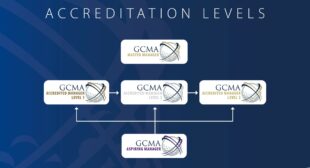We take a look at the different legal structures available to golf club, and the advantages and disadvantages of both unincorporation and incorporation.
Unincorporation
An Unincorporated Association is historically the most common structure used by many private members golf clubs. The members come together and agree to establish a club with rules and operating procedures. These are then set down in the Constitution. It is the simplest form of club structure, the easiest to operate, and the one that most members will be familiar with.
An unincorporated club has no legal identity of its own. It is run by a committee and it will be members of the committee that have to enter into contracts on behalf of the club.
An Unincorporated Association structure is most suitable for small local clubs without significant buildings, equipment or financial assets and not involved in high risk sports where accidents are more likely and potentially costly if negligence could be proved.
A majority of private members golf clubs do not fit these criteria and on the occasion that something goes wrong the members are liable if the assets of the club do not meet the debt or if it is not covered by insurance. Therefore, if the club goes bankrupt, the members could be liable for the debts, irrespective of their individual financial circumstances. Because this liability is unlimited, those with more wealth could be hit harder than those with relatively little money.
For example:
- The trustees of a club could be sued personally
- The chairman and/or committee could be sued individually or collectively
- The committee of a club could be sued via an employment tribunal for damages
- A club could be sued if a construction contract goes wrong
- The estate of a trustee who has passed away could be pursued
It must be understood that incorporation does not merely involve registering with Companies House and changing the name. It is a complex process and requires professional legal services. Almost certainly the club’s constitution will require amendments setting out the legal status of the organisation, how the club will be run and its aims and objectives.
One other point to note is that if the unincorporated club is a CASC (Community Amateur Sports Club) and becomes incorporated, then it will have to re-apply to HMRC to regain its CASC status.
Incorporation
Converting the club to a Limited Company enables your club to become established as a legal entity in its own right and separate from the individual members. There are two forms of Limited Company:
Companies with an issued share capital (limited by shares), where ownership and control lies with the shareholders.
This format is generally inappropriate for golf clubs unless they operate to make a profit for the shareholders.
Companies limited by guarantee, where the members of the company each guarantee to pay a nominal sum (usually up to £5 each) in the event of the company being unable to meet its obligations.
This is most suitable for golf clubs wishing to incorporate as a company and is recommended by the GCMA.
There are several advantages to the Limited Company structure. Because the club is a distinct legal entity, it is easier for the club to enter into contractual arrangements (e.g. to borrow money, own buildings, or stage large events). The club itself, rather than the individual members, are responsible for the club’s obligations and debts (unless one of the officers has acted negligently or fraudulently, in which case the individual remains personally liable). In addition, the individual members can only be held responsible for the debts and obligations of the club up to the nominal value of their guarantee.
The disadvantage of incorporation is that the regulation and administration of Limited Companies is more onerous and there are legal penalties for failure to comply. To be a limited company: –
- A company needs to be formed and registered in accordance with the Companies Act
- The constitution known as the Memorandum and Articles of Association must be filed at Companies House and is a public document
- Annual accounts and an annual return providing details of directors must also be filed
- Any amendments to the constitution can only be made by special resolution and file
- Any changes to directors (appointments and resignations) must also be filed
However, the advantages outweigh the disadvantages and incorporation should be considered if one or more of the following apply to your club:
- The club owns a high value of assets in the form of buildings, facilities, or financial reserves.
- The club is planning a major event where there is a risk of significant financial loss
- The club employs staff
Advantages and Disadvantages
Unincorporated Association
| Advantages | Disadvantages |
|
Flexibility – The rules and constitution can be whatever the members want within the constraints of the law and can be easily changed Little administration – no requirement to file annual returns No outside scrutiny |
Has no legal entity so cannot own assets in its name. Instead members hold the assets in individual names which need transferring if the member leaves. Risk of liability for members relating to contracts, debts, personal injury claims etc |
Company Limited by Guarantee
| Advantages | Disadvantages |
|
Limited liability for members up to the nominal amount agreed. Establishes club as a legal entity capable of entering into contractual arrangements and holding property. |
Administration – company has to file annual accounts, an annual return and director’s details at Companies House. The directors have duties and responsibilities in Company Law. (i.e. to act in the best interest of the company and to comply with its Articles of Association). |
By GCMA



